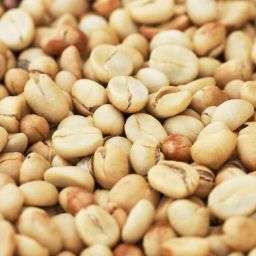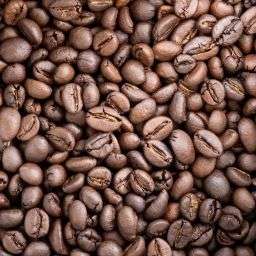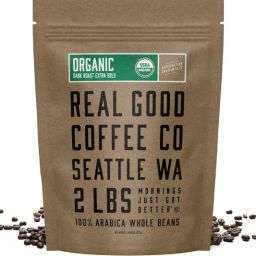
The origin of coffee beans plays a crucial role in defining the coffee drinking experience, influencing everything from aroma to flavor profile. Across the globe, coffee aficionados celebrate the rich diversity of flavors offered by beans from different regions, each bringing its own unique characteristics and story to the cup.
This global appreciation underscores the importance of understanding where and how coffee is cultivated, as the environmental conditions, soil, altitude, and processing methods in each country contribute significantly to the beans’ final taste.
Brazil: The Largest Coffee Producer
Brazil stands as the colossus of the coffee world, contributing significantly to the global coffee supply with its vast plantations stretching across Minas Gerais, São Paulo, and Parana. This country’s beans are renowned for their nutty, chocolaty flavor profiles, a result of the region’s ideal climatic conditions for coffee farming.
Brazil’s method of drying coffee cherries in the sun, rather than washing them, distinguishes its coffee production process from other nations, offering a distinct taste that is both rich and inviting.
Colombia: Renowned for Quality
Colombian coffee is synonymous with excellence, thanks to the country’s optimal coffee-growing conditions. The elevation, climate, and fertile soils of Colombia contribute to producing beans with rich flavors and a smooth finish.
Colombian coffee is often characterized by its bright acidity and aromatic sweetness, reflective of the meticulous care and tradition that local farmers pour into their craft. However, the rugged terrain presents challenges for transportation, impacting the accessibility and cost of these high-quality beans.
Ethiopia: The Birthplace of Coffee
Ethiopia holds a revered place in coffee history as the birthplace of coffee cultivation. It is home to a vast array of coffee varieties, each with distinctive floral and fruity notes that are a testament to the country’s diverse climates and landscapes. Ethiopian coffee beans, particularly those from regions like Yirgacheffe, are celebrated for their complex flavor profiles, which can range from tea-like and floral to berry and wine-like.
This diversity not only speaks to the rich coffee culture of Ethiopia but also to the genetic diversity of the coffee plants themselves, offering a palette of flavors unmatched by any other country.
Diverse Coffee Cultures and Beans
Costa Rica: Volcanic Richness
Costa Rican coffee is celebrated for its exceptionally well-rounded flavors, a direct result of the volcanic soil in which it’s cultivated. The country specializes in wet-processed Arabicas, producing beans that are smooth, soft, and often carry a rich, walnutty flavor.
This meticulous processing method, combined with the fertile volcanic terrain, contributes to coffee that is balanced and vibrant, making Costa Rica a distinguished name in the coffee world for those seeking a cup that embodies both tradition and quality.
Indonesia: Unique Coffee Experiences
Indonesia offers a unique contribution to the coffee industry with its Kopi Luwak, a coffee that undergoes an unconventional production process involving civet cats. The beans, having been digested and then collected from the feces of these animals, are cleaned and roasted, resulting in a coffee that is remarkably smooth with low acidity.
Beyond Kopi Luwak, Indonesia’s rich coffee culture spans across its islands, each producing beans with distinctive flavor profiles, from the earthy and spicy notes of Sumatran coffee to the sweet and floral hints of Java.
Vietnam: Robusta Powerhouse
Vietnam has carved out its niche in the global coffee market by focusing on the robusta variety, known for its strong, bitter flavor and higher caffeine content compared to Arabica beans. This focus has propelled Vietnam to become a leading coffee exporter, especially in markets where robusta’s bold taste and affordability are prized.
Vietnamese coffee, often used in strong, concentrated drinks like the country’s signature iced coffee, continues to gain popularity worldwide, showcasing the versatility and economic importance of robusta beans.
Yemen: The Heritage of Arabian Mocha
Yemen’s Arabian Mocha is a testament to the country’s long and storied history with coffee. Grown in the mountainous regions of Yemen, Arabian Mocha beans are known for their small size, unique shape, and rich, chocolatey flavor with subtle wine notes.
Despite challenges in production and exportation, Yemeni coffee remains highly sought after by connoisseurs for its deep historical roots and its distinctive taste profile, offering a sip of coffee’s ancient heritage.
Emerging Coffee Countries
As the global coffee landscape evolves, new players like Thailand, El Salvador, Guatemala, and Peru are making their mark. Thailand, for instance, has been recognized for its robusta production, while El Salvador and Guatemala are celebrated for their high-quality arabica beans. Peru, on the other hand, is gaining attention for its unique flavor profiles, contributing to the country’s growing reputation in the coffee sector.
These emerging coffee countries highlight the expanding diversity of coffee production worldwide, offering unique flavors and characteristics shaped by their distinct climates and coffee-growing traditions.
FAQs
How do I choose the best coffee beans?
Selecting the best coffee beans involves understanding your flavor preferences. Arabica beans are known for their sweet, complex flavors, suitable for those who prefer a smoother, more aromatic cup. Robusta, on the other hand, offers a stronger, more bitter taste with higher caffeine content, ideal for those seeking a robust experience.
Consider the roast level as well; lighter roasts retain more of the bean’s original flavor, while darker roasts have a more pronounced bitterness and richness.
What are the main differences between Arabica and Robusta?
Arabica and Robusta are the two primary types of coffee beans, differing in taste, chemical composition, and growing conditions. Arabica beans are favored for their smooth, complex flavor profiles, featuring notes of fruit and sugar, with higher acidity and lower caffeine content.
Robusta beans are more straightforward, with a stronger, harsher taste, higher bitterness, and double the caffeine of Arabica. They are often used in espresso blends for their crema and body.
Any tips for ordering coffee from top-producing countries?
When ordering coffee from top-producing countries, look for single-origin labels to experience the unique characteristics of each region. Research the flavor profiles typical of beans from that area; for example, Ethiopian coffees often have floral and fruity notes, while Colombian coffees might be more nutty and chocolatey.
Consider trying coffee through subscription services that offer beans from different countries, giving you a taste of the wide variety the world has to offer.
Final Thoughts
The origin of coffee significantly influences its flavor profile, with each coffee-producing country offering beans that reflect its unique soil, climate, and cultivation practices. From the floral and fruity notes of Ethiopian Arabica to the bold and robust flavors of Vietnamese Robusta, the diversity in coffee is vast.
Exploring different country-origin beans not only broadens your coffee palate but also connects you with the rich cultures and traditions behind each cup. Embrace the journey through the world of coffee to discover your personal preferences and the stories each bean tells.









